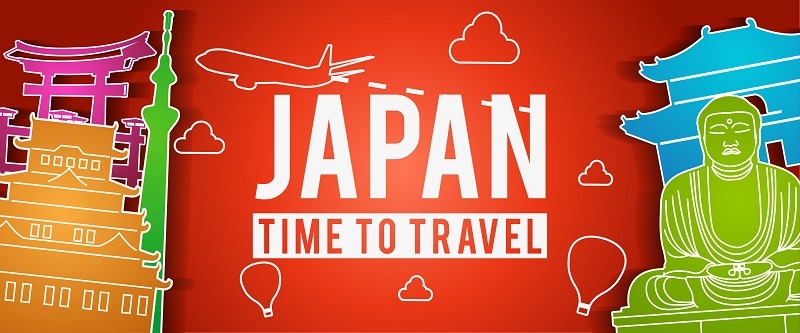
Japan is usually perceived through the lens of neon-drenched cities, symbolic shrines, and tourist hordes. While Tokyo, Kyoto, and Mount Fuji are surely stunning, there's another, quieter Japan that has not yet been spoiled by mass tourism. For the adventurous traveler who desires to go off the beaten path and discover the soul of Japan, unconventional destinations in Japan offer an adventure that's real and indelible.
From serene sea villages to mountain villages, this tour is for travelers who want to experience the lesser-known Japan destinations and see the true charm of countryside tours in Japan. This is your guide to stepping out of the bullet train and into the heart of offbeat places in Japan. Let’s explore the lesser-known Japan destinations, Japan countryside travel, cultural Japan tours, local Japanese experiences, and more.
Japan's rich history, deep culture, and varied terrain extend far beyond the famous cities. When travelers find off-the-tourist-track places in Japan, they can enjoy quieter moments, slower speeds, and the genuine hospitality of native inhabitants. These journeys oftentimes mean native Japanese experiences far removed from tourist traps—hand-pulled soba noodles served in a family kitchen from a home residence, for instance, or casual conversations with a sake brewer at a 200-year-old distillery.
Also, touring lesser-known Japan destinations benefits local economies, which tend to age and dwindle. Your tourist dollars penetrate further into the community when spent at a rural ryokan or family restaurant than at a chain hotel in Shinjuku.
Tottori is overlooked in the shadow of its better-publicized neighbors, but it is on any list of offbeat destinations in Japan. Most renowned for the Tottori Sand Dunes—Japan's only important dune complex—the coastal region has cinematic views of the Sea of Japan, camel rides, and a sand museum with sculptures by artists from around the globe.
Beyond the dunes, the prefecture unfolds into a lovely countryside that is perfect for Japan's countryside travel. One can explore Mt. Daisen, usually likened to Mount Fuji in its conical grandeur, and go trekking, biking, or even skiing in winter. Local onsen towns such as Misasa provide tranquil local Japanese experiences, including traditional bathhouses and mineral waters said to have healing properties.
Along the Sea of Japan, in one of Japan's oldest and most mythologically rich areas, is Shimane. It's the home of the Izumo Taisha, a very old Shinto shrine. Traveling there in October to arrive in time for the Kamiari Festival is one very immersive means of being part of Japan cultural tours because supposedly all of Japan's Shinto gods converge here annually.
Shimane's natural beauty also appears in the guise of its serene fishing villages, historic castles like Matsue, and picture-postcard lake landscapes. It's perfect for those seeking off-the-track Japan destinations where old-fashioned tradition is still part of the daily landscape.
Gifu boasts one of Japan's most renowned off-the-beaten-path destinations—Shirakawa-go. Shirakawa-go is a World Heritage village famous for its gassho-zukuri farmhouses that have steeply pitched thatched roofs, which serve to drop heavy snowfalls. However, aside from the lovely village, Gifu has a lot more in store for Japanese countryside travelers.
Spend a night in one of the old houses to be immersed in Japanese local life, with evenings lit by kerosene lanterns and meals cooked on a sunken hearth. Spring and autumn seasons are great for hiking in the Japanese Alps or for visiting Takayama, a small town with beautifully preserved Edo-period streets and one of Japan's most atmospheric morning markets.
Stretching out into the Sea of Japan from Ishikawa Prefecture is the Noto Peninsula, a journey for the adventurous visitor interested in traveling to out-of-the-way places in Japan. Its rugged coastal roads, tranquil fishing communities, and rice fields offer an unreached landscape few foreign visitors see.
Local Japanese culture is plentiful here. Go to the morning fish auction at Wajima, learn the intricacies of making lacquerware, or dine on just-caught seafood grilled on an open flame. Wajima also has lively festivals that include fireworks, drumming, and big floats—great for cultural Japan tours.

Concealed away in Tokushima Prefecture on Shikoku, Iya Valley is a dramatic gorge carved out of hillside mountains and woodland. This is real Japanese countryside tourism at its finest, where vine bridges sweep over gushing rivers, and thatched-roof cottages cling to hillsides.
Having been a refuge for defeated warriors in the 12th century, the valley remains shrouded in mystery and serenity. The easiest way of enjoying this off-the-beaten-path Japan destination is car rental, as public transportation is not widespread. While staying here, don't miss out on soaking in a secluded outdoor onsen or hiking the Oku-Iya trail that passes through intact landscapes.
Akita, in the T?hoku region, is yet another quirky destination gem of Japan. Renowned for its white winters, rice paddies, and the famous Namahage festival—where locals dress up in demon masks to "terrorize" children into good behavior—Akita is a place where age-old customs remain very much alive and active.
Akita has plenty of cultural Japan tours to offer, like visiting samurai quarters in Kakunodate or the unique Matagi hunting traditions. Autumn explodes with color in autumn forests and spring is perfect for hot springs tucked into secluded mountain sides.
For a combination of nature and history, few of Japan's off-the-beaten-path destinations rival the Kiso Valley. The Nakasendo Trail, an important route between Kyoto and Tokyo during the Edo era, runs through the region. Post towns like Magome and Tsumago have been carefully restored and allow the visitor to hike back in time.
Walking the Nakasendo is not just a hike—it's a cultural tour of Japan in which visitors stay at traditional inns, dress in yukata, and dine on regional food cooked with mountain greens and freshwater fish. It's the height of Japan countryside travel.
To the south of Kyushu stands Yakushima, an island wrapped in ancient cedar forest and fog. It's a hiker, nature lover's, and really anybody's paradise for solitude. This UNESCO World Heritage Site is home to the Jomon Sugi, one of the oldest trees in the world at some 7,000 years or older.
Yakushima is not just another island; it's one of Japan's offbeat destinations that captures a world out of myth. It offers a slower lifestyle, spiritually rich environments, and unforgeatable genuine Japanese experiences like forest bathing, eco-lodging, and island food prepared by locals.
Traveling to Japan's lesser-visited areas requires flexibility and respect for the culture. English is not always spoken in these areas, but politeness, action, and translation software can be just as effective. Transportation can be limited, so renting a car or pre-plotting your route is key. Trains and buses in rural areas are less frequent than in urban zones.
By making local Japanese experiences your priority, your visit will be a story worth listening to long after you've returned home. The next time you find yourself planning a trip to Japan, leave space for the unplanned. Take the side streets, the erasing kanji signs, and the words that lead you off into uncertainty. Sometimes, the best of Japan isn't marked on the map—they're waiting along the backroads where the trains won't stop.
This content was created by AI